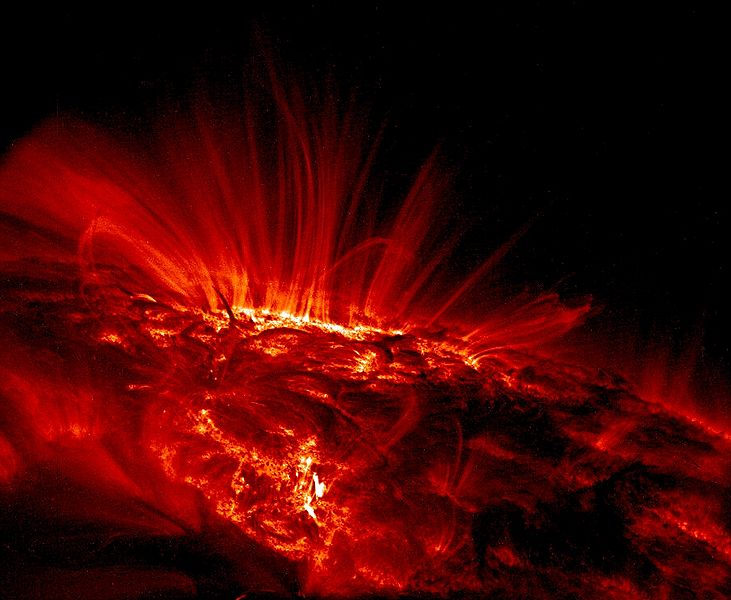Why Sun won’t forget Calcutta – solar physicist rates Sun’s memory

Solar physicist Dibyendu Nandi and PhD student Bidya Binay Karak have shown that the Sun’s memory of its sunspot cycles, long believed to be imprinted in its churning plasma, lasts no longer than five-and-a-half years.
Sunspots are regions of strong magnetic fields that can generate solar storms which spew vast amounts of plasma far into space. These electromagnetic jolts may at times disrupt satellite operations, telecommunications and air traffic over the poles.
The new research implies that long-term predictions of sunspot cycles — a periodic rise and fall in activity — are impossible.
“We’ve identified a mechanism that erases the Sun’s memory,” said Nandi, an assistant professor, and a Ramanujan Fellow at the Indian Institute of Science Education and Research (IISER), Calcutta.
“The memory lasts for less than half the period of a typical solar cycle of about 11 years,” said Nandi, who will present these findings at the annual conference of the American Astronomical Society (AAS) in Anchorage, Alaska.
The frequency of solar storms depends on the strength of sunspot cycles — the greater the strength, the more frequent the storms. The premise of solar memory assumed that the history of sunspot cycles determines the strength of future cycles.
This spawned efforts worldwide to predict the behaviour of future cycles up to a decade in advance — with little success. Forecasts of the current so-called cycle 24 have diverged wildly. Some scientists predicted one of the strongest cycles ever, others predicted a weak cycle, while dozens of research teams came up with intermediate strengths.
A solar cycle prediction panel set up by Nasa and the US National Oceanic and Atmospheric Administration also failed to arrive at an early consensus, and was divided between a very strong and moderate cycle, before it revised its forecast down to a weak cycle.
Astrophysicists use simulations of the solar dynamo — the interaction of solar magnetic fields and the Sun’s plasma — as a tool to study the origin of sunspot activity. But previous forecasts ignored a process scientists call turbulent pumping.
Nandi and Karak tweaked the solar dynamo simulations by adding the effect of turbulent pumping — the term physicists use to describe the complex and fast flow of hot plasma from the surface of the Sun into its deep interior.
“This flow carries a chaotic feature of the magnetic field from the surface of the Sun into its interior where its future cycles are generated,” said Nandi, who will receive an award — the Karen Harvey Prize — in Anchorage from the AAS solar physics division for his contributions to the study of the Sun. “The transfer of this chaotic feature into the interior erases the memory,” he said.
The new findings suggest that sunspot cycle forecasts would require constant observations of the Sun within a cycle for predictions of the next cycle — just as weather forecasts on Earth rely on atmospheric observations of one day to predict the next day’s weather.
Source: telegraphindia.com
Featured image: NASA/TRACE 09/2000 Sunspot in UV

Wondering the the sunspots that are ‘footprinted’ on the sun are dependent upon the energy of the event that created them. If an event was of sufficient energy, could the ‘print’ last for centuries? I have been impressed by the explosion of the nothern hemisphere of the sun Jan 2012 and asked myself if this is a ‘reflection’ of an imprinted energy event? Could it be related to a northern hemispheric explosion on one of the bodies of the solar system? Shouldn’t we look to connect the two?
Cycles of about 11 years do not depend on any memory, any where accumulated. They are “empty talk”
These cycles, which occupied the attention of the world hears the scientific community, as a consequence of long-term mutual relations of elements in the solar system.
Forget the enormous force and effect of magnetic fields, ‘Run all the tricks “that we do not recognize.